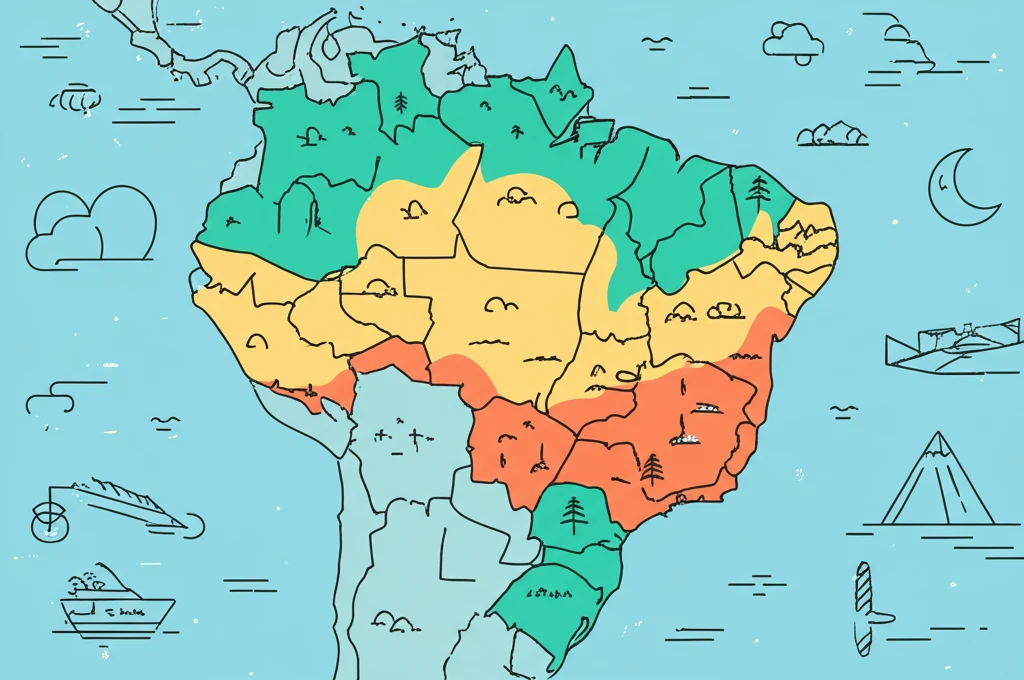
Brazil's Climate is Changing: What the Koppen Climate Classification Reveals
"Analyzing annual climate types in Brazil to understand climate change and its impact on regional weather patterns."
Climate change is a global phenomenon, but its effects are felt locally. Understanding how climate is changing in specific regions requires detailed analysis and effective communication. One method gaining traction is the use of the Köppen climate classification system, which helps categorize climate zones based on temperature and precipitation patterns. By examining changes in these classifications over time, scientists can gain insights into how regional climates are evolving.
A recent study focused on Brazil has utilized the Köppen classification to analyze climate change across the country. Brazil, with its vast size and diverse ecosystems, offers a unique opportunity to observe climate variations and shifts. The study looked at data from 208 weather stations over several decades to identify trends and changes in annual climate types.
This approach not only helps in visualizing climate change but also in understanding its potential impacts on agriculture, biodiversity, and human populations. The Köppen system provides a clear framework for assessing these changes, making it an invaluable tool for climate scientists and policymakers alike.
Tracking Climate Shifts with Annual Climate Types

The study, titled "Climate Change Evidence in Brazil from Köppen's Climate Annual Types Frequency," proposes using the Köppen classification to highlight climate changes in Brazil. Researchers compiled average monthly temperature and precipitation data from 208 stations, representative of Brazil's climatic diversity, spanning from 1964 to 2015. Instead of solely comparing averages between two reference periods, their approach involved classifying each year using Köppen's system. This led to the definition of "Annual Climate Types" (ACTs) and the determination of their frequency for each station and each 26-year period: 1964-1989 and 1990-2015.
- Expansion of aridity in Northeast Brazil.
- Increasing disappearance of tropical climates over temperate zones in the South.
- Changes in rainfall patterns in the South of the Amazon.
A Clearer Picture of Climate Change
This study underscores the value of the Köppen climate classification system as a tool for understanding and communicating climate change. By focusing on annual climate types, researchers can identify subtle but significant shifts in regional climates. This approach provides a practical framework for monitoring climate trends and informing strategies for adaptation and mitigation. As climate change continues to impact ecosystems and human societies, accessible and informative tools like the Köppen classification will be essential for fostering awareness and action.
